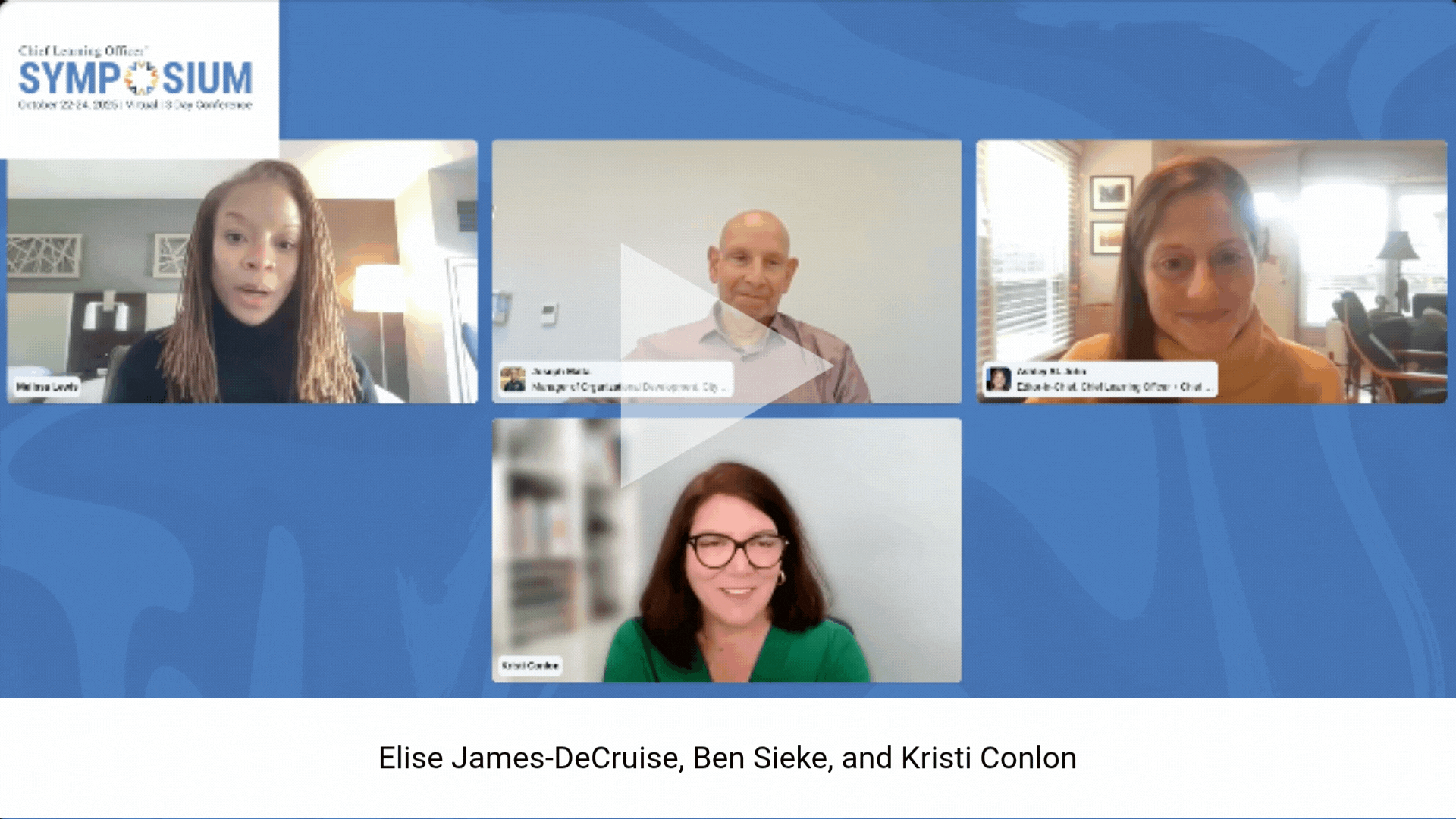 In a world where almost half of the companies on the Fortune 500 today will likely disappear in 10 years, learning is key. Only companies that have a dynamic workforce can hope to keep up, which means chief learning officers today have a profound part to play in helping their organizations survive and thrive.
In a world where almost half of the companies on the Fortune 500 today will likely disappear in 10 years, learning is key. Only companies that have a dynamic workforce can hope to keep up, which means chief learning officers today have a profound part to play in helping their organizations survive and thrive.
Learning helps to attract, engage and retain the best people. And it allows workers to develop new skills that align with the changing needs of their businesses. Disruptive learning is not the enemy. Disruption is an opportunity for us to make our organizations more agile and ready for change.
Here are three ways CLOs can create a more engaging learning environment by leveraging technologies that have disrupted the market.
Harness the power of video learning. Video is an intensely personal, immediate way of taking in new information. It’s also easier to create than ever before. Today we can record and edit high-quality video instantly from our smartphones and tablets.
But many organizations struggle to share this content with their employees in a way that gives them a great playback experience across any device, while simultaneously ensuring security and scalability for a global workforce. Thankfully, the technologies powering video in the consumer world, such as cloud video storage, conversion and smart streaming, are easier for enterprises to obtain.
Incorporating video into a broader work-related learning experience is one way to start small. For example, some organizations have found that a short video on key learning content is most effective before a required in-person class. Instead of spending valuable class time introducing important concepts, employees can come to the class prepared with questions.
Create a collaborative culture with employee-generated content. Humans have evolved in large part because we learn from one another. As a species, we build upon others’ ideas and experiences. And today, everybody, everywhere, has access to courses from the world’s leading institutions.
Yet, in the workplace it’s a different story. Learning environments are often uninspiring, transactional and top-down. The real world lacks the excitement, immediacy and the social nature of digital learning.
Because employee-created content, also known as user-generated content, or UGC, is so new, many organizations don’t know where to begin and how to ensure that shared content is appropriate. To begin, think about which parts of your workforce would find the most immediate benefit, and initiate a small-scale pilot with those departments. Sales and marketing are often a good start, but technical workers can also find great benefit in the approach, too.
Consider what the ideal approval process should look like. An employee’s manager is often the best person to vet content for accuracy, perhaps followed by the learning and development team for final approval before content is published. Also, think about providing resources and how-to information to help employees create effective and impactful content. A little guidance on things like structure, length and how to capture effective sound all go a long way to enable good content.
Drive engagement with targeted content. Marketers use sophisticated, targeted campaigns combining data with engaging content to attract consumers and drive business growth. Netflix uses big data to try to ensure every new show is a home run, because the company knows entertainment is more meaningful when it’s data-driven and targeted. CLOs now have the data, tools and content to strategically target and engage their workforces in the same way.
Learning audiences can be defined using HR and financials data such as talent, potential, location, management level and even sales productivity. Content can be crafted with different audiences in mind to drive initiatives forward and help those workers succeed in their roles. Then, data can be used to track engagement and ROI to improve on learning experiences over time.
For example, an online course on management and leadership skills can be distributed to everyone in a company’s U.S. offices who were recently promoted to a manager position for the first time. Over time, business leaders can track how this leadership training impacts things like retention and performance for employees under these new managers.
It’s an exciting time for CLOs, as we now have the technologies, the tools and the most compelling reason of all — the business imperative — to make a lasting contribution to our organizations’ successes.
James Cross is director of learning product strategy at Workday. To comment, email editor@CLOmedia.com.














